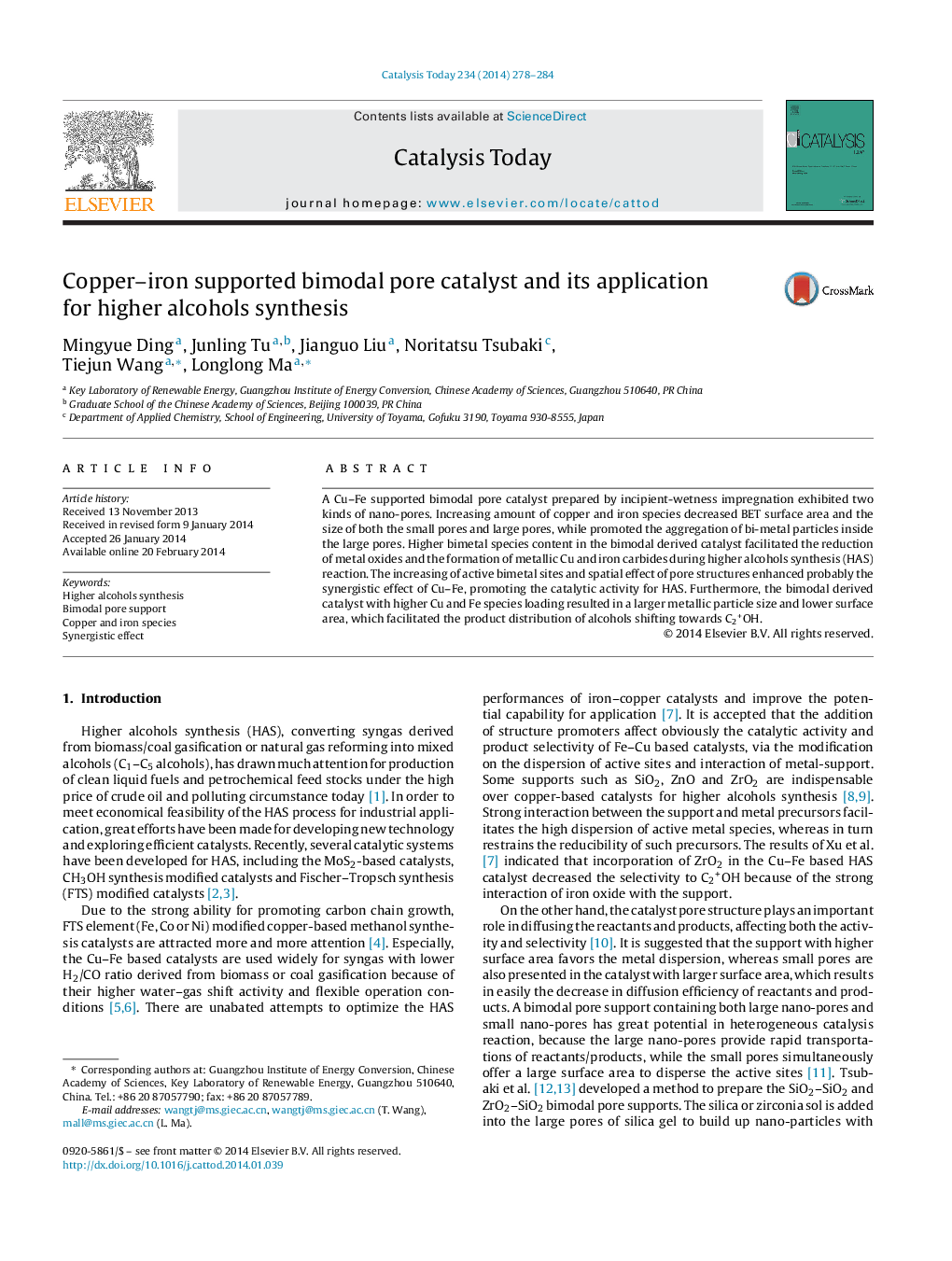| Article ID | Journal | Published Year | Pages | File Type |
|---|---|---|---|---|
| 54274 | Catalysis Today | 2014 | 7 Pages |
•The Cu–Fe supported bimodal catalyst exhibited obviously two kinds of nano-pore.•Adding Cu and Fe species changed the spatial and chemical effect of the SiO2–SiO2 bimodal support.•Increasing bimetal content strengthened the synergistic effect of Cu–Fe inside pore structures.•The catalyst added more Cu and Fe content presented higher activity and selectivity to C2+OH.
A Cu–Fe supported bimodal pore catalyst prepared by incipient-wetness impregnation exhibited two kinds of nano-pores. Increasing amount of copper and iron species decreased BET surface area and the size of both the small pores and large pores, while promoted the aggregation of bi-metal particles inside the large pores. Higher bimetal species content in the bimodal derived catalyst facilitated the reduction of metal oxides and the formation of metallic Cu and iron carbides during higher alcohols synthesis (HAS) reaction. The increasing of active bimetal sites and spatial effect of pore structures enhanced probably the synergistic effect of Cu–Fe, promoting the catalytic activity for HAS. Furthermore, the bimodal derived catalyst with higher Cu and Fe species loading resulted in a larger metallic particle size and lower surface area, which facilitated the product distribution of alcohols shifting towards C2+OH.
Graphical abstractFigure optionsDownload full-size imageDownload high-quality image (132 K)Download as PowerPoint slide
